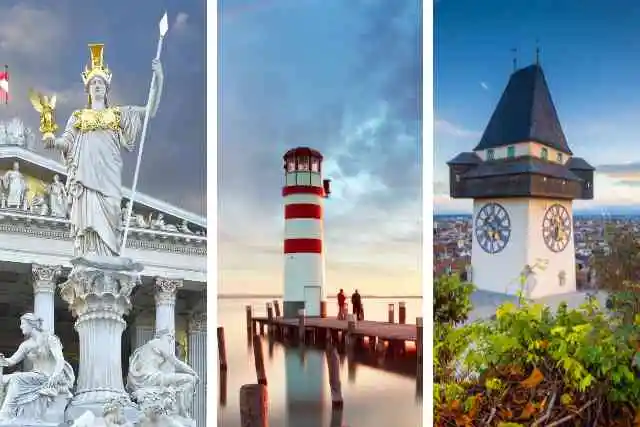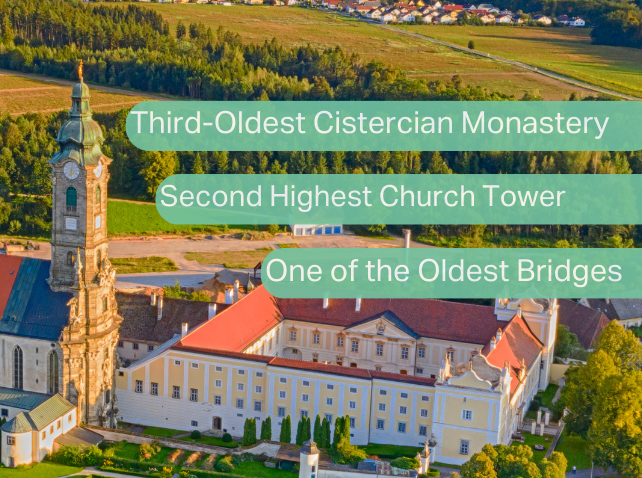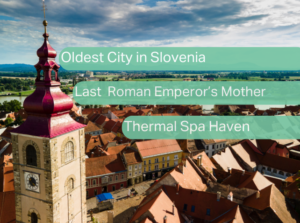Step into the magic of Zwettl Abbey, where centuries-old stories, tranquil gardens, and the grandeur of monastic life wait to be discovered. Prepare to be amazed by this extraordinary journey through time!

Book
Austria by Public Transport
Discover Austria like never before with “Austria by Public Transport.” This book is your ultimate guide to exploring the beauty of Austria easily and affordably. Get your copy today and start your adventure!
A Cistercian Pearl
Have you ever wondered what treasures hide in the Austrian forests? One of them is Zwettl Monastery (Stift Zwettl)—a place full of history, legends, and spirituality. It amazes with its architecture and peace. We invite you to discover this extraordinary Cistercian pearl in the heart of Austria.
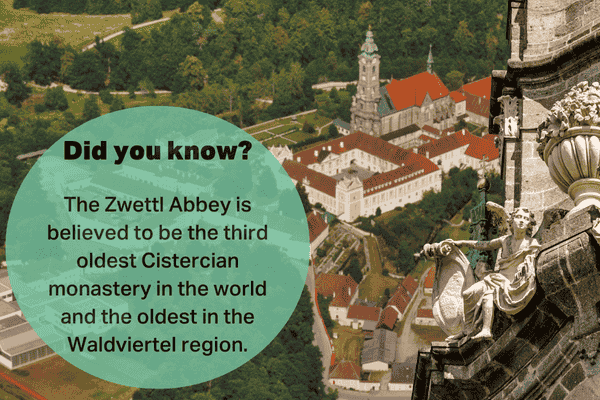
Zwettl Means “Clearing”
The lands of today’s Austria were always inhabited by people of different origins. The name “Zwettl” proves this, as it comes from Slavic and means “a lit place” or “clearing.” Therefore, Zwettl Monastery (Stift Zwettl) is located in the middle of a forest, surrounded by hills, in a small valley. This makes it a special place full of history.
Gallery
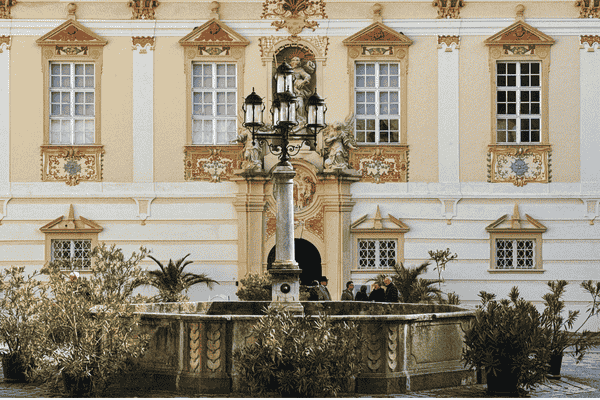
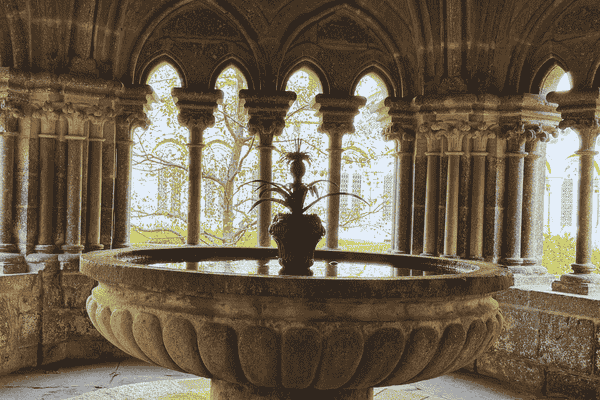

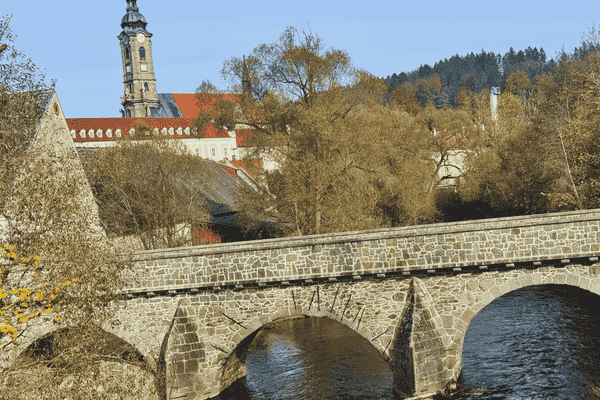
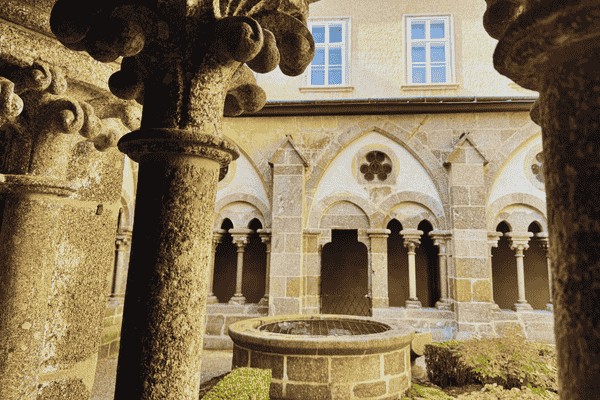
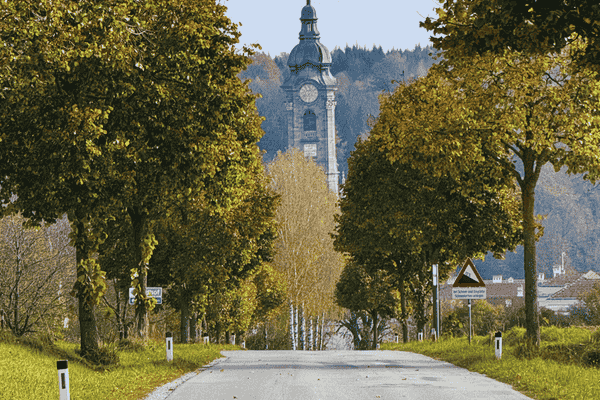
History of Zwettl Monastery
(Stift Zwettl)
Beginnings and Foundation
Hadmar I von Kuenring established the monastery in 1138. Twelve monks came to Zwettl (Stift Zwettl) from Heiligenkreuz, a beautiful monastery near Vienna. They started building the first monastery buildings. Later, they consecrated the monastery in 1159. Interestingly, they began building Zwettl (Stift Zwettl) only two years after founding Heiligenkreuz.
Legend of the Founding
Once upon a time in Austria, there lived a knight named Hadmar von Kuenring. He dreamed of founding a monastery, but he wasn’t sure where to build it. On New Year’s Eve, he had a dream in which the Virgin Mary appeared to him. She told him that he would find the right place in the forest, where a green tree stood, even in winter.
Hadmar shared his dream with Abbot Hermann, who had also had a similar vision. Together, they set off into the forest, and after a long journey, they discovered an oak tree that was green and bore fruit, while everything around was covered in snow.
Hadmar and Hermann decided to build the monastery at this very spot, placing the altar where the magical oak had grown. To support the monastery, Hadmar donated as much land as he could ride around on horseback in a single day. Today, the main altar in the Zwettl church reminds us of this legend.
Challenges and Resilience
The history of the monastery reflects the turbulent times of the region. Many wars, invasions, and plagues led the monastery to decline in the 16th century. The Hussite wars, the Reformation, and the Thirty Years’ War were especially harmful. However, they began rebuilding and renovating the monastery right away, adding Baroque architectural elements.
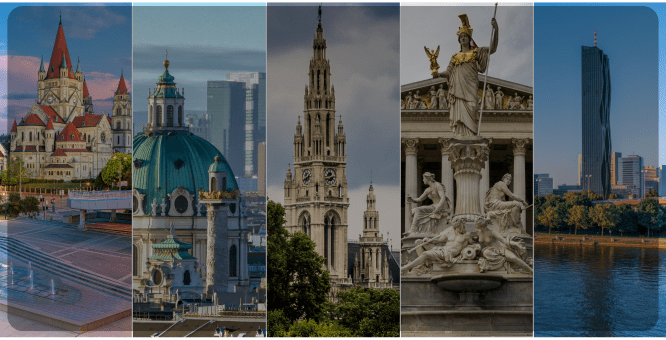
Subscribe
Explore Vienna like a local and discover nearby treasures.
Join our mailing list!
Education and Survival
In the following centuries, the monks did not only do monastic work but also taught others. The First World War and Nazi terror did not harm the monastery in the 20th century. Therefore, today we can admire its original historical structure. However, during the Nazi period, it lost much of its land, causing economic problems. After Austria regained full independence in 1955, the government promised to pay compensation to Zwettl Monastery (Stift Zwettl) for the lost land.
The Kuenringers
Long ago in Austria, there lived a noble family known as the Kuenringers, who had a great influence on the development of the region. It all began with Azzo von Gobatsburg, who arrived in Austria in the 11th century. Over time, his family became one of the most powerful in the country. Hadmar I, one of the Kuenringers, founded the famous Zwettl Abbey in 1137.
The Kuenringers were known for their castles, such as Kühnring Castle and Aggstein Castle. They were also associated with legends about the “Kuenringer Hounds” – two brothers, Hadmar III and Heinrich III, who were regarded as relentless knights. In reality, though they were warriors, later stories exaggerated their brutality.
The Kuenringers had their own special coats of arms. The most famous was a red ring on a silver background, symbolizing the family’s courage. Another coat of arms they used featured five stripes on a golden background, reminiscent of Saxon symbols. These heraldic symbols were important as they showed the family’s status among the knightly elite.
Although the last member of the Kuenringer family died in 1594, their legacy lives on. Even today, the Liechtenstein family, who took over some of their estates, has elements of the Kuenringers’ symbols in their own coat of arms, demonstrating the significant role they played in Austrian history.
What to See
Inside the Monastery
The interior of the monastery is definitely worth visiting with a guide. We can admire the gardens, designed to look like paradise, and the beautiful cloisters with about 365 columns, symbolizing the days in a year.
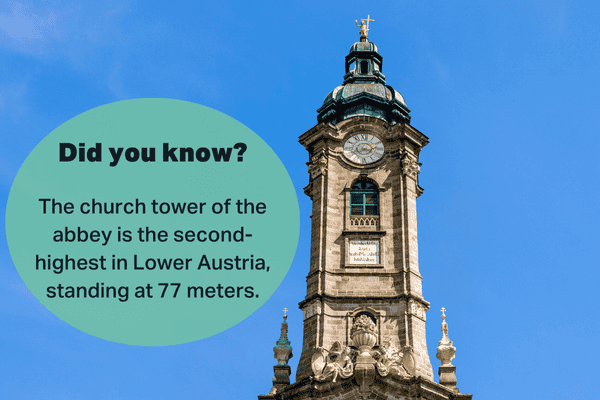
Fountain with a Pineapple
The fountain amazes with its uniqueness. Monks used to wash and bathe there, and today it impresses us with its craftsmanship. Moreover, the fountain is topped with a pineapple, which symbolized wealth because it was an exotic and expensive fruit.
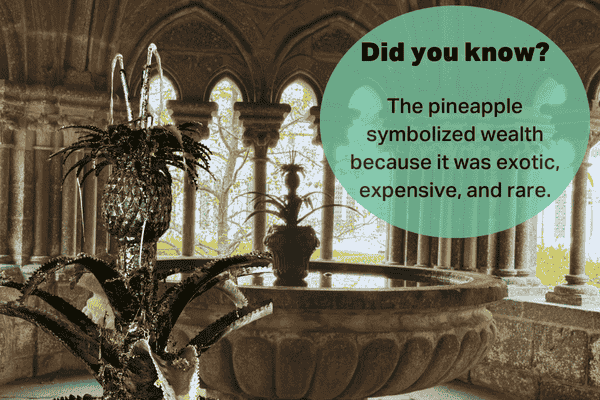
Monastery Library
The beautiful monastery library delights with its decorations and rich collection of books. Additionally, in the monastery treasury, there are amazing objects made of ivory, a replica of the most important monastery book, and a unique stained glass window.
Life of the Cistercians
The Cistercians are monks who live in a special way, focusing on prayer, work, and a simple life.
Prayer and Work – The Cistercians spend a lot of time in prayer. They rise very early, even before dawn, to pray together. Then they work – growing vegetables, harvesting grain, and taking care of animals. Everything they do is meant to support their community so that they do not have to buy food or other necessities.
Simple Life – The Cistercians value simplicity. Their churches and buildings have few decorations – they are austere but beautiful in their simplicity. Even their clothing is simple, usually plain white habits.
Silence – The monks speak only when truly necessary. They often spend time in silence, believing it helps them communicate better with God and listen to His guidance.
Community – The monks live together like one big family. They share everything and help each other. They also have an abbot who guides their lives according to the rules of the order.
The Cistercians teach us that a simple life focused on what truly matters can bring peace and happiness.
Experience the Magic of
Zwettl Monastery
Zwettl Monastery (Stift Zwettl) is a place full of history, legends, and spirituality. Its rich past and unique architecture make it one of the most important monuments in Austria. By visiting this place, we can admire medieval architecture and immerse ourselves in the peace and reflection that Cistercian life offers.
More Interesting Facts
- Zwettl Abbey is the only Romanesque-Gothic monastery in German-speaking countries.
- It has more than 365 columns, some made to look like wood but appearing as marble. Monks used them to hide valuables during raids.
- The library holds a UNESCO-listed book from 1769, documenting a Jesuit’s observations among South American Indians.
- A 12th-century stone bridge next to the monastery, over the Kamp River, is one of the oldest in Austria.
- On the outer wall of the sawmill near the stone bridge, you can see Austria’s longest wooden plank.
- During the tower’s construction, three workers tragically died.
So, if you plan a trip to Austria, be sure to include Zwettl Monastery (Stift Zwettl) in your itinerary. It is a place that will leave unforgettable impressions and help you understand the rich history of this region better.
The Niederösterreich Card
A highly recommended tip for visitors is to purchase the Niederösterreich Card. This card offers free or discounted access to many attractions in Lower Austria, including Zwettl Abbey. By using this card, you can save money while enjoying a variety of activities in the region.
Join Our Vibrant Community
Are you passionate about discovering the hidden gems of Vienna and its surroundings? Follow us on social media and become part of our enthusiastic community!
Why Follow Us?
- Exclusive Content: Each post is a labor of love, taking between 10-30 hours to create. We share breathtaking photos, captivating stories, and invaluable tips.
- Stay Updated: Never miss out on exciting events, new attractions, and must-visit spots in and around Vienna.
- Support Independent Projects: We are an independent project, and your follows help us cover the costs of running this page. Your support is crucial!
Your Support Matters!
Every follow, like, and share directly supports our work. It helps us continue bringing you the best content and ensures we can keep this site running. By following us, you’re not just staying informed – you’re helping us grow and thrive.
Don’t miss out! Click the links above and start following us today. We can’t wait to connect with you!

